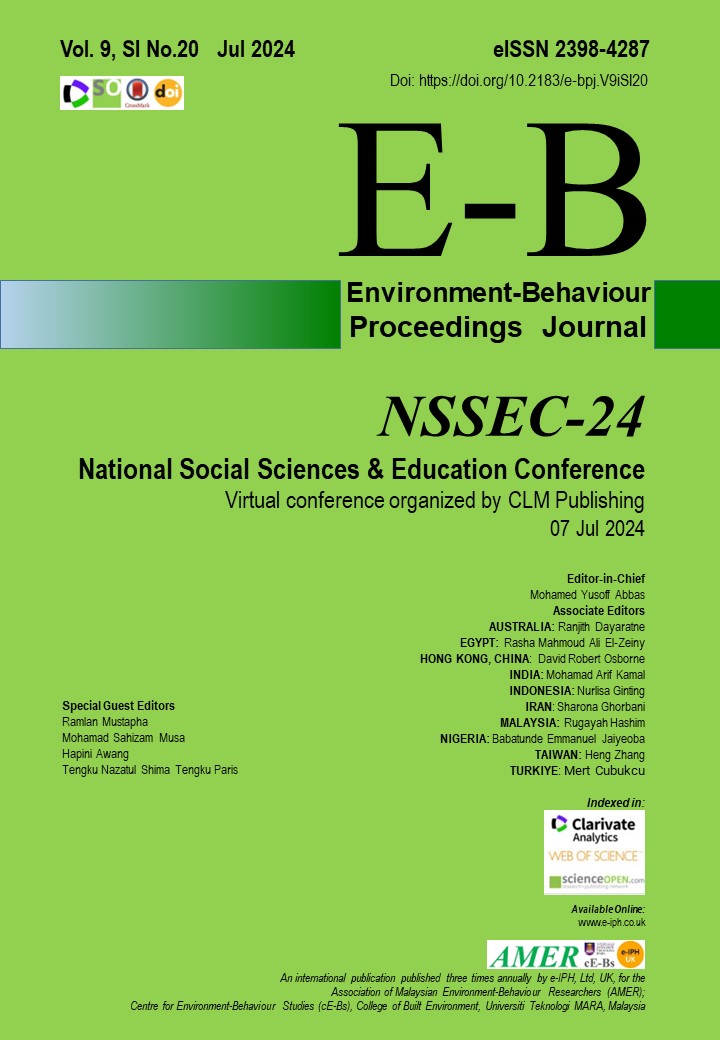Effect of Heart Rate Variability Biofeedback Training on Score and Stress Level of Shooting Athletes
DOI:
https://doi.org/10.21834/e-bpj.v9iSI20.6101Keywords:
Shooting Athletes, HRV Biofeedback Training , Stress Levels, Shooting ScoreAbstract
This study aimed to explore the impact of a 12-week emWave pro-based heart rate variability biofeedback training followed by a 2-week follow-up on shooters' performance, stress levels, and heart rate variability (HRV). Thirty-six shooters aged 18-24 (18 experimental, 18 control) participated. The experimental group underwent 12 weeks of biofeedback and shooting training, while the control group only received shooting training. Results showed significant improvements in performance, stress levels, and HRV parameters in the experimental group, reflecting enhanced parasympathetic activity. Biofeedback reduced training and competition stress, improving overall performance and stability during matches, emphasizing its effectiveness in shooter training.
References
Aubert, A. E., Seps, B., & Beckers, F. (2003). Heart rate variability in athletes. Sports medicine, 33, 889-919. DOI: https://doi.org/10.2165/00007256-200333120-00003
Bellenger, C. R., Fuller, J. T., Thomson, R. L., Davison, K., Robertson, E. Y., & Buckley, J. D. (2016). Monitoring athletic training status through autonomic heart rate regulation: a systematic review and meta-analysis. Sports medicine, 46, 1461-1486. DOI: https://doi.org/10.1007/s40279-016-0484-2
Brick, N. E., McElhinney, M. J., & Metcalfe, R. S. (2018). The effects of facial expression and relaxation cues on movement economy, physiological, and perceptual responses during running. Psychology of Sport and Exercise, 34, 20-28. DOI: https://doi.org/10.1016/j.psychsport.2017.09.009
Coelho, A. B., Nakamura, F. Y., Morgado, M. C., Holmes, C. J., Di Baldassarre, A., Esco, M. R., & Rama, L. M. (2019). Heart rate variability and stress recovery responses during a training camp in elite young canoe sprint athletes. Sports, 7(5), 126. DOI: https://doi.org/10.3390/sports7050126
Gerritsen, R. J., & Band, G. P. (2018). Breath of life: the respiratory vagal stimulation model of contemplative activity. Frontiers in human neuroscience, 12, 397. DOI: https://doi.org/10.3389/fnhum.2018.00397
Hanin, Y. L., & Stambulova, N. B. (2002). Metaphoric description of performance states: An application of the IZOF model. The Sport Psychologist, 16(4), 396-415. DOI: https://doi.org/10.1123/tsp.16.4.396
Hong, E., Keenan, L., Putukian, M., & Scifers, J. R. (2018). Addressing mental health issues in the collegiate student-athlete. Athletic Training & Sports Health Care, 10(2), 54-58. DOI: https://doi.org/10.3928/19425864-20180219-01
Lee, G., Ryu, J., & Kim, T. (2023). Psychological skills training impacts autonomic nervous system responses to stress during sport-specific imagery: An exploratory study in junior elite shooters. Frontiers in Psychology, 14, 1047472. DOI: https://doi.org/10.3389/fpsyg.2023.1047472
Lehrer, P., Kaur, K., Sharma, A., Shah, K., Huseby, R., Bhavsar, J., & Zhang, Y. (2020). Heart rate variability biofeedback improves emotional and physical health and performance: A systematic review and meta-analysis. Applied psychophysiology and biofeedback, 45, 109-129. DOI: https://doi.org/10.1007/s10484-020-09466-z
Michela, A. (2024). The heart on duty: Training police officers in action using a biofeedback virtual-reality game (Doctoral dissertation, Sl: sn).
Michela, A., van Peer, J. M., Brammer, J. C., Nies, A., van Rooij, M. M., Oostenveld, R., ... & Granic, I. (2022). Deep-breathing biofeedback trainability in a virtual-reality action game: A single-case design study with police trainers. Frontiers in Psychology, 13, 806163. DOI: https://doi.org/10.3389/fpsyg.2022.806163
Mosley, E., & Laborde, S. (2022). A scoping review of heart rate variability in sport and exercise psychology. International Review of Sport and Exercise Psychology, 1-75. DOI: https://doi.org/10.1080/1750984X.2022.2092884
Pagaduan, J. C., Chen, Y. S., Fell, J. W., & Wu, S. S. X. (2020). Can heart rate variability biofeedback improve athletic performance? A systematic review. Journal of Human Kinetics, 73(1), 103-114. DOI: https://doi.org/10.2478/hukin-2020-0004
Peng, F., & Zhang, L. W. (2021). The relationship of competitive cognitive anxiety and motor performance: testing the moderating effects of goal orientations and self-efficacy among Chinese collegiate basketball players. Frontiers in psychology, 12, 685649. DOI: https://doi.org/10.3389/fpsyg.2021.685649
Pinc, T. (2023). Effects of Heart Rate Variability Biofeedback on Indicators of Self-Regulation and Performance in Brazilian Police Officers. DOI: https://doi.org/10.21203/rs.3.rs-3060003/v1
Rees, B. (2011). Overview of outcome data of potential meditation training for soldier resilience. Military medicine, 176(11), 1232-1242. DOI: https://doi.org/10.7205/MILMED-D-11-00067
Schwarz, A. M., Schächinger, H., Adler, R. H., & Goetz, S. M. (2003). Hopelessness is associated with decreased heart rate variability during championship chess games. Psychosomatic medicine, 65(4), 658-661. DOI: https://doi.org/10.1097/01.PSY.0000075975.90979.2A
Shaffer, F., & Ginsberg, J. P. (2017). An overview of heart rate variability metrics and norms. Frontiers in public health, 5, 290215. DOI: https://doi.org/10.3389/fpubh.2017.00258
Spencer, J., Wolf, S. L., & Kesar, T. M. (2021). Biofeedback for post-stroke gait retraining: a review of current evidence and future research directions in the context of emerging technologies. Frontiers in Neurology, 12, 637199. DOI: https://doi.org/10.3389/fneur.2021.637199
Stephenson, M. D., Thompson, A. G., Merrigan, J. J., Stone, J. D., & Hagen, J. A. (2021). Applying heart rate variability to monitor health and performance in tactical personnel: A narrative review. International Journal of Environmental Research and Public Health, 18(15), 8143. DOI: https://doi.org/10.3390/ijerph18158143
Wahab, M. N. A., & Atta, A. (2015). The study on the effect of zikir protocols training towards performance of heart rate variability (HRV) and academic achievement among secondary school’s students. International Journal of Computer Applications, 117(1). DOI: https://doi.org/10.5120/20518-2250
Yijing, Zhang et al. “The Effects of Guided Imagery on Heart Rate Variability in Simulated Spaceflight Emergency Tasks Performers.” BioMed research international vol. 2015 (2015): 687020. doi:10.1155/2015/687020 DOI: https://doi.org/10.1155/2015/687020
Zhang, J., Li, X., Li, Y., Li, J., Li, Z., & Zhang, X. (2022). Electromyographic biofeedback improves muscle activation patterns and performance in badminton players. Applied Psychophysiology and Biofeedback, 47(1), 85-95.
Zhou, Q., Li, N., & Wu, X. (2023). Cultural limitations of Chinese shooting sports education models. International Journal of Sports Science & Coaching, 19(1), 73-91.
Downloads
Published
How to Cite
Issue
Section
License
Copyright (c) 2024 Huang Donghai, Muhammad Nubli Abdul Wahab, Zhang Xiuling

This work is licensed under a Creative Commons Attribution-NonCommercial-NoDerivatives 4.0 International License.





